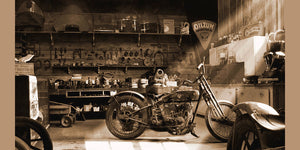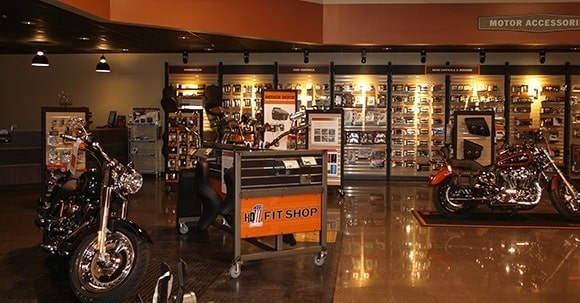Top MX Gear NZ: Prepare for Your Following Off-Road Journey
Top MX Gear NZ: Prepare for Your Following Off-Road Journey
Blog Article
Understanding the Important Parts of a Motorcycle: A Comprehensive Guide for Fanatics
For motorcycle enthusiasts looking to elevate their riding experience and ensure their bikes run smoothly, comprehending the essential components of a motorcycle is paramount. Each element, from the engine's complex operations to the vital role of the braking systems, not just impacts efficiency however additionally safety and convenience.
Engine Parts

The camshaft plays a critical duty in regulating the timing of the engine's valves, making sure the specific opening and closing necessary for reliable gas and air consumption, in addition to exhaust expulsion. This timing is important to keeping ideal engine efficiency and performance. Additionally, the carburetor or gas injection system, depending upon the motorbike model, is in charge of mixing air with gas in the appropriate ratio for burning.
The air conditioning system, either air or liquid-based, works to keep the engine's temperature within operational limits, protecting against overheating and making certain longevity - motox parts nz. Each component, diligently designed and incorporated, adds to the seamless operation of the engine, specifying the bike's power output and overall performance
Transmission System
Important to the motorcycle's capability, the transmission system makes certain efficient power transfer from the engine to the wheels. This system comprises a number of crucial elements, including the clutch, gearbox, and last drive, each playing an essential role in translating the engine's power right into activity. The clutch, normally operated by a hand lever, serves to disengage the engine and engage from the transmission, enabling for smooth equipment changes and regulated acceleration.
The gearbox, usually described as the transmission proper, has a collection of gears that motorcyclists can by hand change via to adjust the bike's speed and torque result. These gears are set up in a sequence that enables the motorbike to accelerate efficiently and preserve ideal engine performance throughout various speeds. A lot of motorcycles make use of a sequential transmission, needing the rider to change gears in a fixed order.
Braking Mechanisms
While understanding the transmission system is essential to taking advantage of a motorbike's power, equally vital is the capability to regulate and quit that power properly, which is where stopping devices enter play. Brakes are important for security and efficiency, offering the rider with the required control to navigate different surfaces and problems. Typically, bikes feature 2 kinds of stopping systems: disc brakes and drum brakes.
Disc brakes are more widespread in contemporary motorbikes because of their premium performance. They include a brake disc, caliper, and pads. When triggered, the caliper presses the brake pads versus the spinning disc, transforming kinetic power right into warmth, consequently slowing down the wheel. This system provides far better heat dissipation, consistent performance, and improved stopping power, especially in wet conditions.
Conversely, drum brakes, though less typical, are still discovered in some motorcycles. They work by pushing brake footwear versus the internal surface of a drum attached to the wheel. While typically less reliable in warm dissipation and quiting power, drum brakes are simpler and extra cost-effective.
Understanding these stopping systems' nuances allows riders to preserve their motorcycles effectively and value the engineering that makes certain secure and effective quiting.
Suspension and Steering
Suspension and steering systems are vital elements that considerably affect a bike's handling and experience convenience. The shock absorber, including forks at the front and shock absorbers at the back, soaks up road irregularities, improving stability and control. Front forks, inverted or generally telescopic, compress and rebound to mitigate effects, while rear shock absorbers preserve tire contact with the road, important for grip and safety.
Steering, centered around the handlebars, connects the rider to the motorbike's directional control. The guiding head bearings guarantee smooth operation, allowing exact ability to move. Correct alignment and upkeep of these bearings are vital for foreseeable steering action and reducing biker fatigue.
The suspension's motorcycle riding boots for sale adjustability is another important element; preload, damping, and rebound settings allow modification to match numerous riding styles and problems. This adaptability is necessary for maximizing performance, whether browsing city roads or dealing with sturdy routes. Technologies like electronic shock absorber use real-time adjustments, improving adventure This Site top quality across varied surfaces.

Electrical Equipments
After guaranteeing a controlled and smooth experience via effective suspension and guiding systems, attention transforms to the electric systems, a critical facet of modern motorcycles. These systems play an essential duty not just in starting the engine however also in powering numerous components that boost the performance and safety of the motorbike.
At the heart of a motorbike's electrical system is the battery, which shops electric energy required for beginning the engine and powering supporting systems - motox parts nz. The alternator or generator, paired with the rectifier-regulator, makes sure the battery stays billed while the bike is in operation, converting mechanical energy into electric energy and keeping voltage degrees
The ignition system, an additional critical element, is liable for stiring up the air-fuel mix in the engine's cyndrical tubes. Modern motorcycles often make use of a digital ignition system, providing better performance and reliability compared to traditional systems.
Lighting systems, including headlights, tail lights, and indicators, are additionally important, making certain presence and safety and security for the motorcyclist. Added digital parts such as sensors, control units, and shows add to innovative features like fuel shot management, anti-lock stopping systems (ABS), and electronic dashboards, additionally enhancing the riding experience.
Verdict
A detailed comprehension of a bike's important components, consisting of the Get More Information engine, transmission system, stopping devices, suspension, guiding, and electric systems, is indispensable for fanatics intending to maximize convenience, efficiency, and safety. Proficiency of these elements permits for notified choices relating to maintenance and upgrades, inevitably boosting the riding experience. By integrating this understanding, bikers can guarantee their motorbikes run at peak efficiency and reliability, consequently optimizing both satisfaction and longevity of their cars.
For bike fanatics looking to elevate their riding experience and guarantee their bikes run smoothly, recognizing the important components of a motorcycle is critical.Essential to the motorcycle's capability, the transmission system guarantees effective power transfer from the engine to the wheels.While understanding the transmission system is crucial to using a motorcycle's power, similarly vital is the capacity to manage and quit that power effectively, which is where braking devices come into play. Generally, bikes feature two types of stopping systems: disc brakes and drum brakes.
A comprehensive understanding of a bike's vital components, including the engine, transmission system, stopping devices, suspension, guiding, and electric systems, is indispensable for lovers intending to maximize comfort, safety, and performance.
Report this page